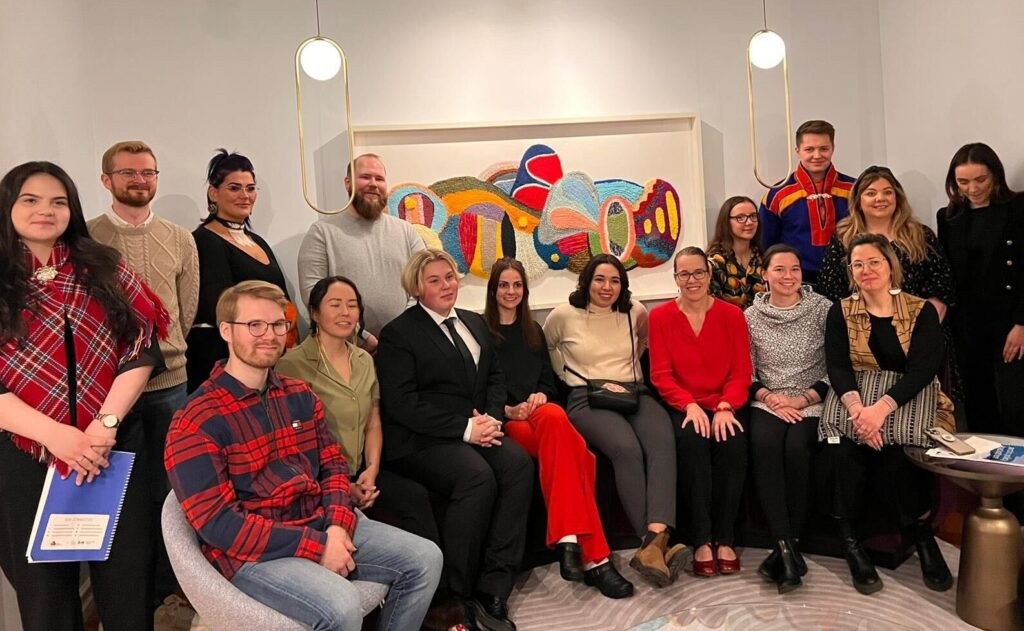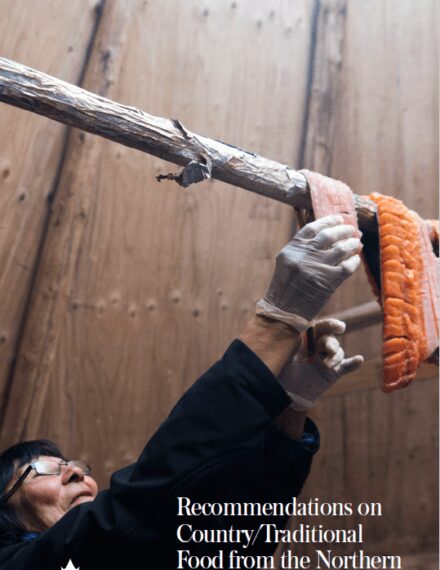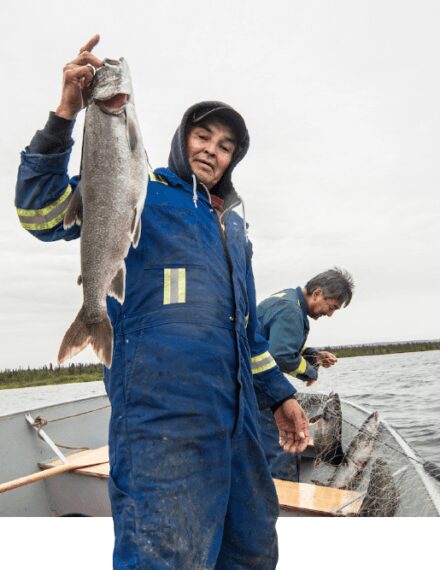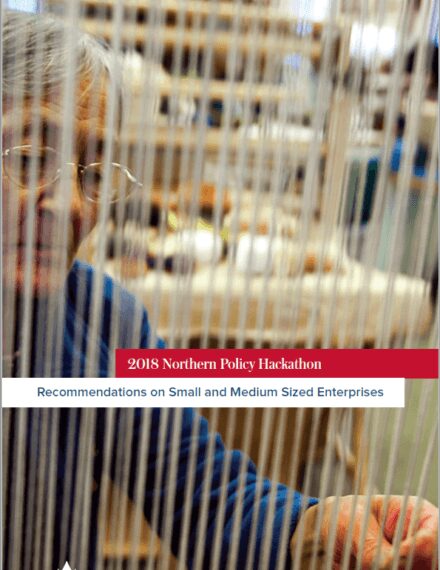
Good public policy development centres the experiences of the communities it impacts. However, in the Arctic, as elsewhere, policy decisions often come from outside the region. The emerging leaders who took part in the second Arctic Policy Hackathon in Reykjavík last year set out to help change that. Policy Hackathons engage diverse groups of people who are passionate about driving solutions for pressing policy issues. Participants discuss, question, challenge and brainstorm ideas, and develop creative policy recommendations for a broad audience. It is an alternative model for developing policy, drawing on the value of lived experiences, in this case, the experiences of young people living in the Arctic. After several generative Northern Policy Hackathons hosted with stakeholders across Canada’s North, The Gordon Foundation adapted the model to a circumpolar setting at the first Arctic Policy Hackathon in 2022.
Following the success of the first international iteration, we, along with our partners at the Arctic Mayors’ Forum and Global Affairs Canada, hosted the second Arctic Policy Hackathon ahead of the Arctic Circle Assembly in October 2023. Sixteen emerging leaders from Arctic Indigenous and local communities in Finland, Norway, Sápmi, Iceland, Greenland, Canada and Alaska joined us in Reykjavík for two intense days of policy development, after which many stuck around to participate at the Assembly.
Hosting emerging leaders at the Policy Hackathon provides Arctic states and stakeholders with the opportunity to engage the next generation, bring new voices to the forefront, and encourage current leaders to listen with open minds to cutting edge policy recommendations on a crucial issue facing the Arctic. At the Policy Hackathon, participants addressed the topic of the Future of the Arctic: Keeping Next Generation Leaders in the Arctic. This was chosen as the next generation hold a critical stake in ensuring long-term community resilience. However, in many Arctic communities and countries, young people are moving away for a variety of social, economic, and environmental reasons.
Participants first decided what three areas to focus their recommendations on. As one of our broader topics compared to previous Policy Hackathons (such as Food Sovereignty, Housing, or Traditional Food), narrowing the theme was no easy task, with many possibilities that could be explored. As a full group, each person shared what attracted them to live in the Arctic. This generative discussion set the tone for the rest of the event, allowing participants to ground the recommendations in their own desires to stay or move to the Arctic. Once the themes – Culture and Community, Sustainable Development, and Holistic Wellness – were selected, participants began brainstorming and developing recommendations in their thematic groupings.
On the second day, participants were addressed by Robert Sinclair, Senior Arctic Official (SAO) and Director General, Arctic, Eurasian and European Affairs (Government of Canada) over a lunch-and-learn. Sinclair offered advice on the process of informing policy and took questions from participants as they shifted to finalizing their policy recommendations.
In the final hours of the Policy Hackathon, participants found consensus on their opening statement and recommendations under the three themes, then painstakingly refined and finalized the document to get it printed by the end of the day. The tight timeline was due to two Hackathon participants presenting this policy document on a panel at the Arctic Circle Assembly the following morning. Anyone familiar with the usual pace of the policy-making process knows this is quite a feat! Many Assembly attendees at our panel and others who grabbed a copy of the policy recommendations booklet were astounded by this quick turnaround.
Brynjar Andersen Saus, Tromsø, Norway
I did not know exactly what to expect when arriving at the Hackathon in Reykjavík. I have been to seminars and workshops before, but never one where we were attempting to produce a coherent document of policy recommendations with no previous common political platform in just two days. To be honest I was skeptical that we would actually be able to create anything of value. Thankfully, I was sorely mistaken.
From the very beginning it was obvious that the group of young people gathered at the Hackathon were highly capable and motivated. I was blown away by the insights and understanding my fellow participants brought to the table and the biggest challenge turned out to be choosing among the brilliant ideas brought forward in the discussions. We landed on three main topics to answer the questions; why do we want to live in the Arctic, how can we get more people and expertise to the Arctic, and how can we develop the Arctic while respecting the existing social, cultural and Indigenous values?
One of my personal main focuses throughout this work was how the Arctic can contribute to solving the world’s challenges in such a way that it benefits the existing Arctic communities. I believe the Arctic can take a leading role in solving such issues as climate change through research, innovation, and technological development. The unique climate and conditions in the region represent extremely valuable data and the possibility of testing new technologies in some of the harshest conditions on earth to ensure technological robustness.
In the end, I was amazed by the work done by my fellow participants and the organizers of the event. The Hackathon ended up producing a set of policy recommendations I believe to be important guidelines for how to develop the Arctic in the future, that are both actionable and viable. The experience was very educational and instilled me with renewed motivation and dedication to work on Arctic policy and building a better future for Arctic youths.
Sigurþór Maggi Snorrason, Reykjavík, Iceland
To be honest, I didn’t know what to expect exactly. Despite having familiarized myself with the information material and looking at pictures, both the hackathon and the conference took me by surprise. I had previously gone to large conferences and prepared in some way in a group with young people before them. I think without a doubt that the work we did at the hackathon was by far the most constructive I’ve done, and the sheer scale of the conference itself was something that the pictures couldn’t fully convey in advance.
What I got most out of this adventure was finally meeting young people from places in the north where I had never met people before. I had the misconception that everyone living in the north had exactly the same experiences as us Icelanders. As an example, I can take Greenland, which is now a colony of Denmark, just like Iceland was in the last century. With that, I thought that their relations with their colonizers were the same as ours. But with us having no Indigenous peoples in Iceland and more European-like characteristics, while the vast majority of Greenland’s population is Indigenous, has led to completely different challenges for the Greenlanders. Gaining a glimpse into the experiences of people elsewhere in the Arctic shed light on the privileges that Icelanders had in not being subjected to violence due to racism.
But at the same time, it could be heard that many of the challenges facing young people in the Arctic were very similar, and this common strong feeling was there to gravitate us to the North because of culture, connections, nature, and opportunities, despite very difficult weather conditions. We found the same causes for problems like the migration of young people to the south, and we were also able to find solutions that work in most of our communities.
The Policy Recommendations
After two intense days, the Hackathon participants produced a concise set of practical policy recommendations. The document’s opening statement powerfully outlines what the Arctic means to the participants and their communities:
Our future is dependent on young people in the whole region taking on leadership roles. The next generation must guide the development of the Arctic in a sustainable way such that we respect and honor the existing natural and cultural values, while at the same time creating opportunities and contributing to solving the biggest challenges facing our societies and the world at large. We believe that diversity and inclusion are the cornerstones to keeping and recruiting the next generation of leaders in the Arctic.
We live in the Arctic because of our traditional and professional livelihoods, and culture. We want to live in areas where we can practice and be immersed in our culture and share it with others. We feel a connection to community, family and our ancestors. We feel immense emotions about the North, a place where we feel seen and that is an integral part of our identity. We are proud of being Northerners and feel a sense of responsibility for the North that is rooted in the continuation of practicing and sharing Arctic and Indigenous cultures. The Arctic is where we are motivated to make change and feel that we have room to grow. This is our home where we want to live, create, and exist.
The Arctic is facing colonization, oppression of language and culture, exploitation of natural resources and depopulation. These issues are largely the result of decisions made outside the Arctic without our participation or consent. This must change and we, the young leaders and Indigenous Peoples of the Arctic, must own our own future. We will create an attractive region for all, with an abundance of opportunities and the fundamentals for living good and rewarding lives. (Arctic Policy Hackathon Participants, 2023)

The policy recommendations that follow the opening statement focus on the self-determination of Arctic leaders.
Under the Culture and Community theme, participants emphasize the need to recognize cultural pursuits as respectable livelihoods and create the conditions for youth to pursue cultural or traditional knowledge practices as a career path. They outline recommendations for employment opportunities with succession plans and to adopt an Arctic lens, placing value on local expertise and knowledge holders, when it comes to credentials. They make recommendations that promote diversity and inclusion to create a sense of safety and belonging, with reference to sexual and gender diversity.
For the Sustainable Development theme, participants recommend critical principles for development in the Arctic to feature transparent decision-making, as well as local ownership, youth and Indigenous involvement. Further recommendations highlight the opportunities and potential for Arctic-led research & development, as well as tourism that is both safe and welcoming.
The final theme, Holistic Wellness, addresses shortcomings in climate change responses, and the way healthcare and education services are delivered in the Arctic. The grouping of these three subthemes under the wellness banner communicates how these interconnected issues all require holistic, cooperative wraparound responses. Other principles for delivering these services include community-driven and determined approaches, that are culturally appropriate and sustainably funded.
Policy Recommendations in the International Arena
Following the Policy Hackathon, participants Kirsten Tanche and Brynjar Andersen Saus shared the group’s policy recommendations on a panel moderated by Jeremy Etuangat Ellsworth (former hackathon participant, Environment and Research Coordinator at Inuit Circumpolar Council Canada) at the Arctic Circle Assembly. The room was packed with Arctic leaders, media, and their fellow participants from this year’s Hackathon. Kristen and Brynjar were joined on the panel by Stephen Traynor (Vice President of Policy, Planning, Communications and Northern Projects Management Office for the Canadian Northern Economic Development Agency) and Carina Sammeli (Mayor of Luleå Municipality, Sweden, Arctic Mayors’ Forum), who shared their remarks on the policy recommendations based in their regions.
One month later, both participants travelled to Brussels for the Arctic Futures Symposium to present on a panel (Cultivating Arctic Communities) hosted by our partner Patti Bruns, Arctic Mayors’ Forum. As part of The Gordon Foundation’s commitment to promote the recommendations, with our partners, we continue to seek out new platforms and audiences to share them with.
Conclusion
Indigenous and young peoples’ involvement in decision-making in the Arctic is vital, as are the opportunities for participation in international forums such as the Arctic Circle Assembly. Bringing young people together from diverse regions to tackle cross-cutting issues generates innovative solutions and speaks to the importance of cooperation across the Arctic. The Hackathon served as an exciting forum for emerging leaders to connect and exchange with one another, a noted highlight for many participants.
We recruited participants with a range of policy and leadership experience, especially those who may not already see their role in influencing policy. We hope that participants left with an increased understanding of policy development and an interest in promoting the policy recommendation in their respective municipalities and communities. We aspire to see the policy recommendations reach wider audiences and play a role in securing the futures that participants envision for their Arctic communities.
Article originally published on 11 March, 2024, in The Arctic Circle Journal.


